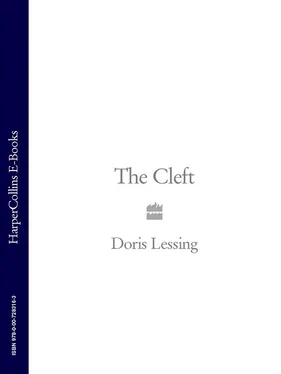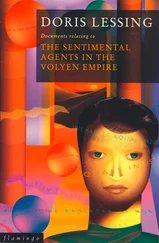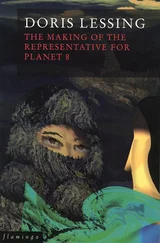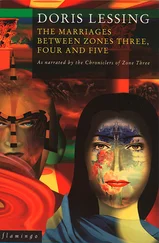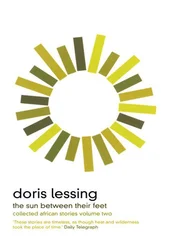Here is a war chant of the Very First Men:
Kill the Clefts,
Kill them, kill them,
They are our enemies
Kill them all.
On ceramics as old as anything we have are pictures of genital mutilation, by no means only of males by females, but of females by males. These are not the sophisticated jars and vessels of an era considered to be of artistic merit. They are clumsy and rough. Depictions of torture are kept locked up and most people don’t know of their existence. Some ruler of an optimistic cast of temperament decreed all depictions of tortures of any kind must be destroyed or kept locked up: apparently believing that we humans would be incapable of cruelty if the ideas weren’t first put into our heads. I wonder who he was. Or, perhaps it was a She. A long time ago. The hoard of pottery was found in a cave that it is suspected was a dwelling place for primitives.
So, I shall end the explanations and come to my attempt at a history; one that both Clefts and Monsters, males and females, would agree to. Immediately I confront a problem. I wrote there ‘males and females’. Males are always put first, in our practice. They are first in our society, despite the influence of certain great ladies of the noble Houses. Yet I suspect this priority was a later invention. 
Compiled from ancient verbal records, written down many ages after their collection.
They lay on rocks, the waves splashing them, like seals, like sick seals, because they are pale and seals are mostly black. At first we thought they were seals. Singing seals? We had never heard seals sing, though some say they have heard them. Then we knew they were the Clefts. There were three of us boys. We knew we hated the Clefts though we did not remember anything of our earliest days, of being put out on the Killing Rock, or being carried over the mountain by the eagles. What we were seeing had to surprise, no matter what we had been told. More, we were disgusted. Those large pale things rolling in the waves, with their disgusting clefts, which we saw for the first time, and as we looked, from the cleft of one of those slow lolling creatures emerged a bloody small-sized thing. We saw it was a tiny Cleft. Only later did we reason that it might just as well have been a Squirt – one of us. We ran back, past the big Cleft in the cliffs, with its reddish stains and fuzzy growths. We ran and we vomited and we went back up the mountain and over down to our place.
This above is the earliest account we have of how we ‘Monsters’ saw the ‘Clefts’. There is no way of proving it but I would say it is a memory of something well in the past of the speaker. It has the smoothed-over much-repeated quality of a tale from long ago. There is nothing here like the raw angry fragment (which I did not copy out because of its relishing vindictive cruelty) which is the very first we hear from the Clefts.
 To make a history from this kind of material is not easy, but I have to say in justification that seldom did the Memories of the Clefts and Monsters differ very much. Often the tone was different, and once it was believed that different events were being recorded. But on the whole Clefts and Monsters (or Squirts) lived the same story. Now I again begin my tale.
To make a history from this kind of material is not easy, but I have to say in justification that seldom did the Memories of the Clefts and Monsters differ very much. Often the tone was different, and once it was believed that different events were being recorded. But on the whole Clefts and Monsters (or Squirts) lived the same story. Now I again begin my tale.
They lived on the shore of a warm sea on an island that was in fact very large, but they never went far from home shore. They were of the sea, sea creatures, eating fish and seaweeds and some shore-growing fruits. They used tall caves with sandy floors but they might as easily sleep out on the rocks as under the cave roofs. How long had they lived there? And at once we come to a main difficulty – indeed, this historian’s main problem. The Clefts did not know when their kind had first crawled from the waves to breathe air on the rocks, and they were incurious. They did not think to wonder or ask questions. They met the query – but this came much later – ‘How old are you, as a people?’ with bland, blind enquiry: ‘What do you mean?’ Their minds were not set for questions, even a mild interest. They believed – but it was not a belief they would defend or contest – that a Fish brought them from the Moon. When was that? Long, slow, puzzled stares. They were hatched from the moon’s eggs. The moon laid eggs into the sea, it lost a part of itself, and that was why it was sometimes large and glowing and sometimes pale and thin. As for their own capacity to give birth, they had never questioned it. That was how things had always been. Nothing changed, could change, would change – but this was more a feeling than something they could or would enlarge on or even mention. They lived in an eternal present. For how long? Useless to ask. When the first ‘Monster’ was born it was seen merely as one of the deformed babes that had sometimes to occur, and then there was another ‘Monster’ all shaped in the same horrid and disturbing way. They were put out on the Killing Rock, not fed to the fishes, perhaps, because of a superstitious feeling that in the sea the Monsters might proliferate and even crawl back to the shore. Can we use the word ‘superstition’ about creatures who did not live in any kind of reality we would recognise?
I believe the birth of the Monsters was the first bad or even disturbing thing to have happened to them.
Yes, there were high water-line marks on their cave walls, big waves must at some time have come rushing up, more than once, but these were creatures of the sea. There is no way of finding out what they felt about monster waves – their songs are not histories or stories but a kind of keening, sounding like the wind when it sighs and murmurs.
It was not the first Monster that shocked them out of their dream. A twisted arm or leg, a deformed hand, even blurred features or a misshapen head – that kind of thing was sad but not threatening, as when they saw the second or third or succeeding babes with the clutch of protruding flesh there in front where they had smooth flesh, a neat slit, fringed with soft hair. A horror … and then another … and then another … they could not wait to get these misborn babes out on to the Killing Rock. Those squirting protruding things there in front, which changed shape all the time, oh horrid, ugly, there was something about them that …
Well, the eagles carried them off and ate them, took them out of sight.
But everything had changed. It must have been the same as when you poke with a stick one of those torpid stranded beach creatures, which squirms as it feels the stick.
Shock after shock was felt by this community of dreaming creatures and it was their helpless panic that caused their cruelty.
And when it became evident that the Monsters were not going to stop appearing there was this new threat, that the numbers of the community were always reducing.
And there was fear that some female who had given birth to a Monster would then have another. How would she have been viewed? There is no record anywhere of early animosity among these creatures. Was she feared? Did she fear herself? Did a female who had given birth to more than one Monster procure for herself an abortion when finding again that she was pregnant? We have no answers to these questions.
How long did that early time last?
There is no help for us in the Memories.
There is a way of not measuring, but getting a feel of the long process. The deep grave or pit where the girls were sacrificed was crammed with bones, and it was a deep hole. At its bottom were cracks and apertures where rocks had fallen outwards, and through these could be glimpsed the lower layers of bones, not fresh and whole, like the top layers, but fractured and fragmented, and lower down still, on the floor of this great hole was a layer of whitish stuff, the dust of bones. It was a deep layer. It must have taken a long time for these bones to turn to dust, even though winds and salty wet blew into the holes and gaps, hastening the process.
Читать дальше
